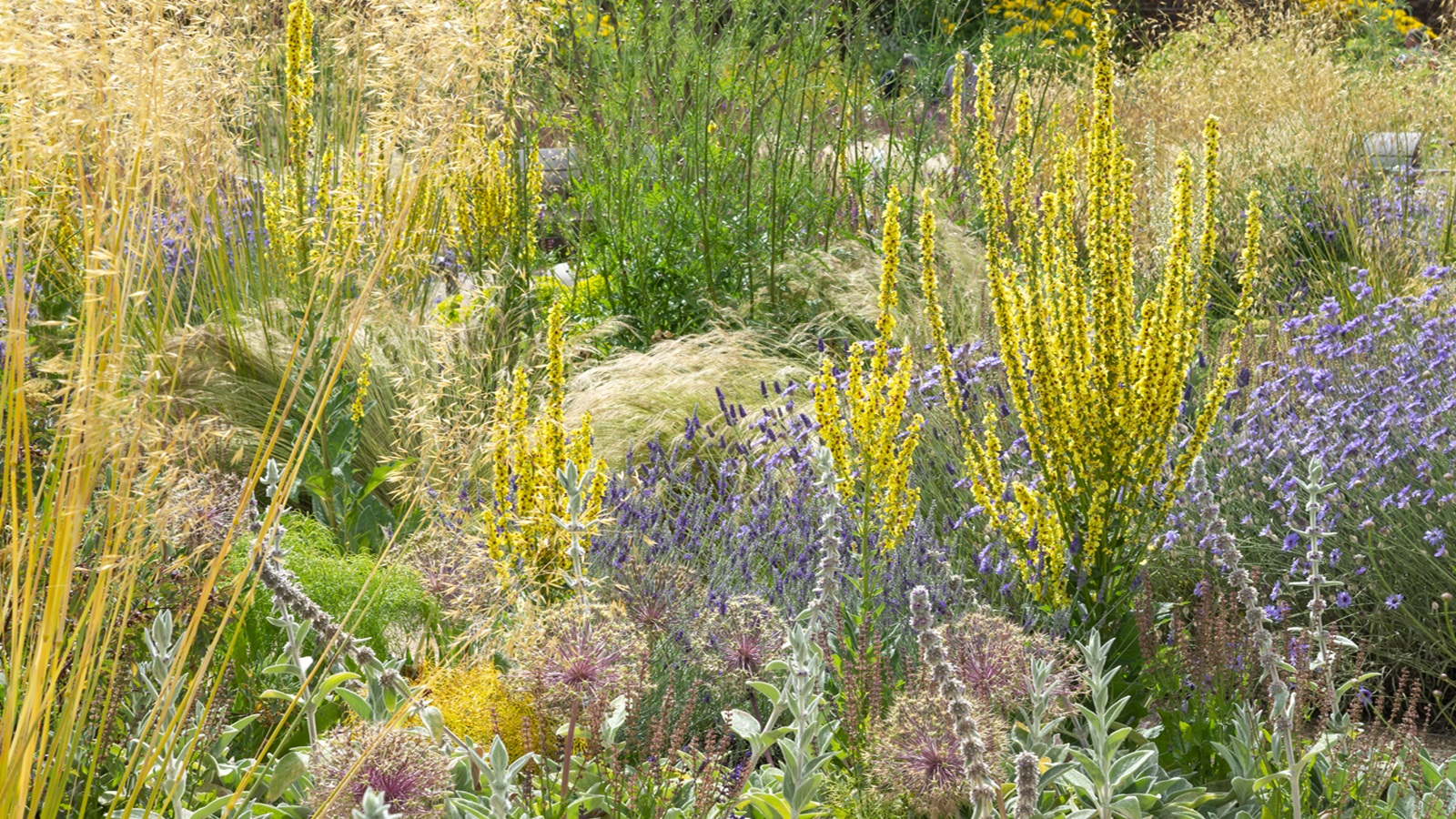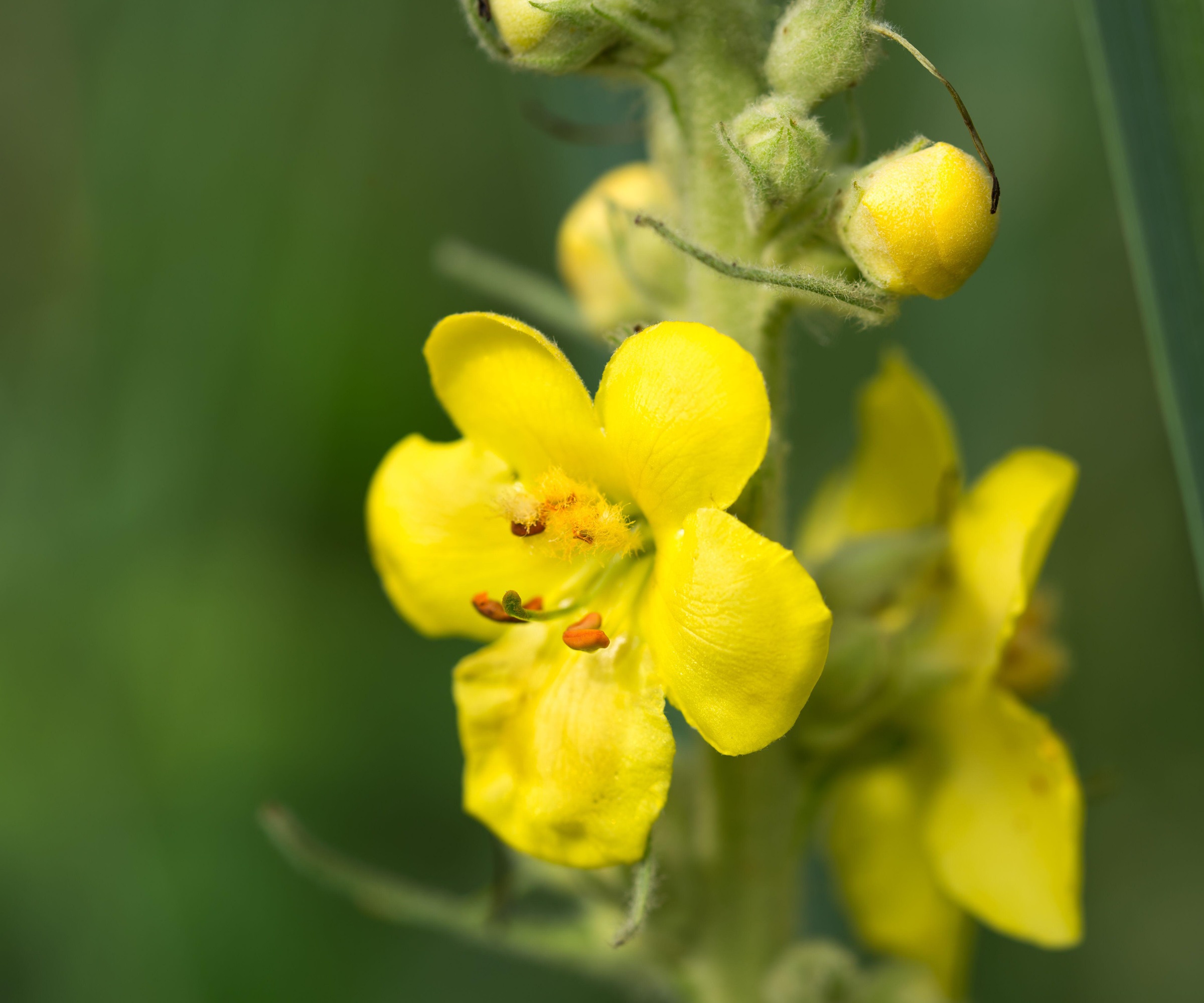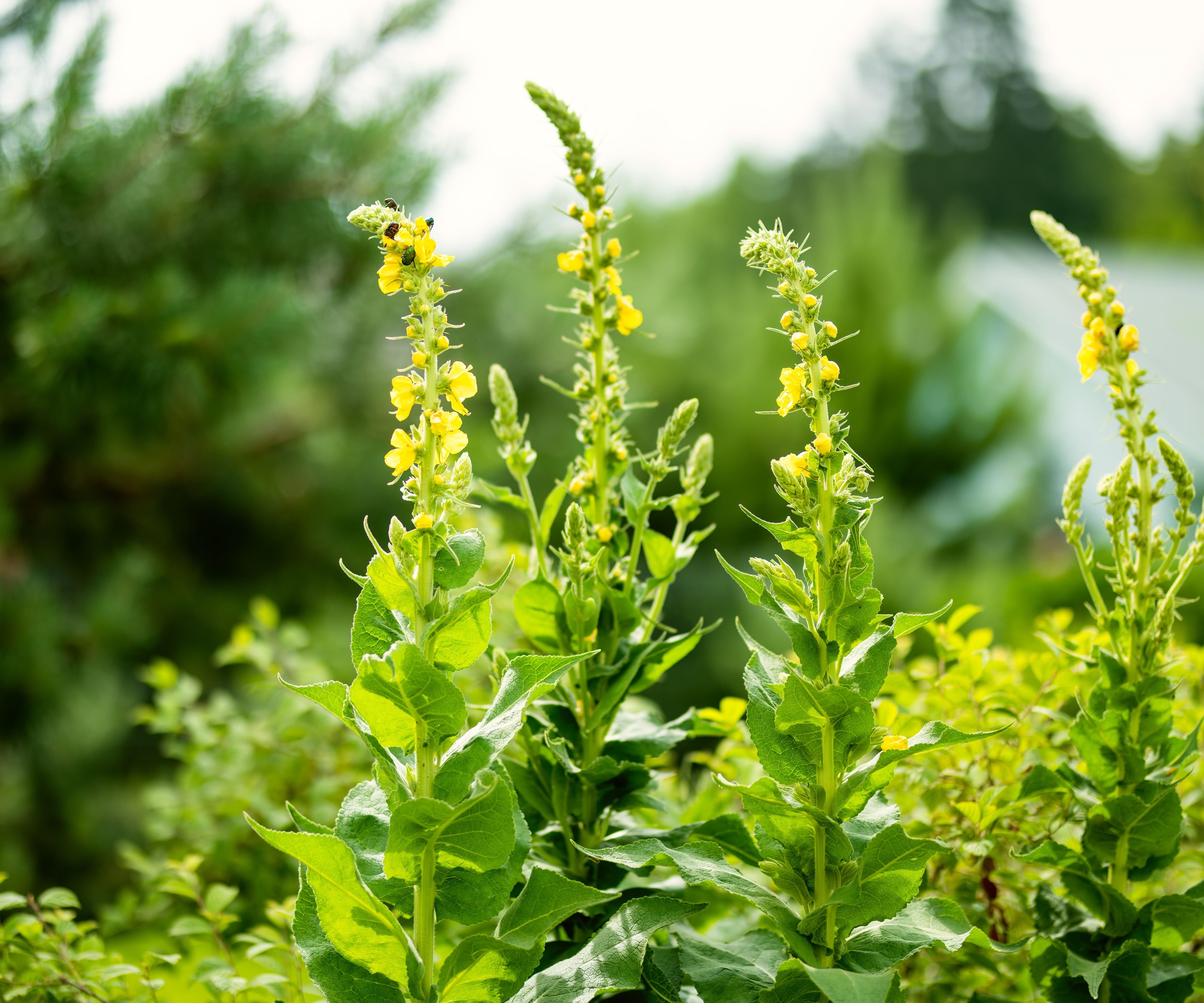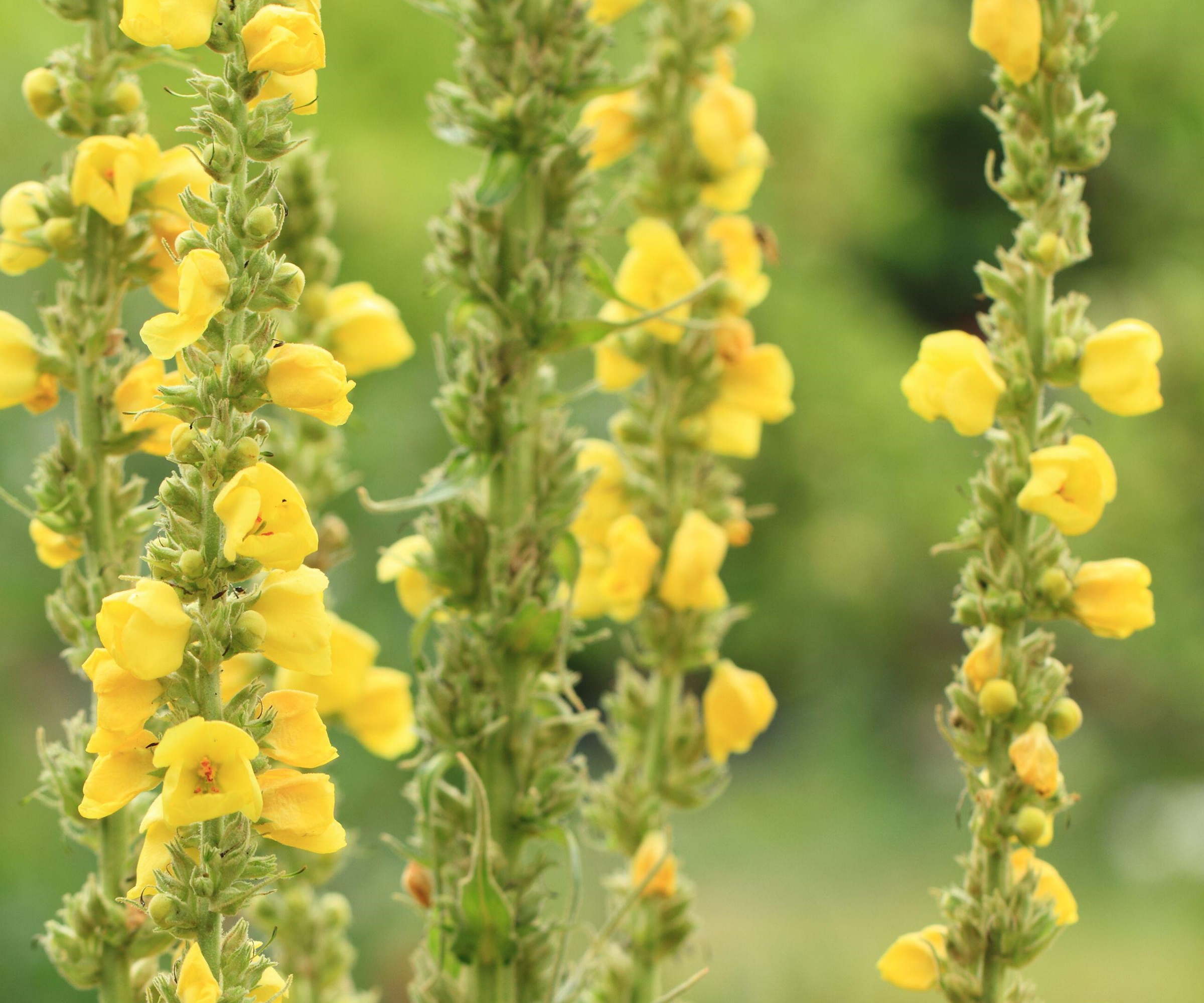How to grow common mullein – simple, expert steps for dramatic height and endless summer color in your borders
Want verbascum thapsus to thrive in your yard? Then follow these failsafe tips from leading experts


Knowing how to grow common mullein – from seed, cuttings and plant divisions – will not only boost your plot’s wildlife and pollinator appeal but add valuable height, structure and long-lasting color to planting too.
Widely recognised as a biennial, common mullein produces a ground hugging rosette of furry, silver leaves in the first year, followed by a majestic 8 foot tall (2.4m) flower spike in the second summer. Happy in full sun thanks to its deep tap root and hairy silver foliage, each fading golden yellow flowerhead is packed around the upright stem and produces a mass of tiny seeds. Self-seeding freely at the end of the summer through to early fall, new plants will quickly establish themselves often in paving joints and gravel as well as borders and lawn.
Besides it’s unique tactile charm, common mullein is a valuable resource for wildlife too. A key plant for attracting bees, it produces a succession of nectar rich blooms over several weeks while its fuzz covered leaves provide useful shelter and nesting materials for other species of insect. Discover just how easy it is to fill your yard with these sunny flower towers and learn how to include them in your future flowerbed ideas.
How to grow common mullein

Adored by pollinators and the perfect plant choice for endless summer color, Verbascum thapsus doesn’t fail to impress. Easy to grow – in fact, you will often find it happily self-seeding year after year – it not only adds visual charm but supports and shelters a wide range of beneficial insect and wildlife too.
A native of Northern Africa, Asia and and Europe, this plant is often found where soil has been recently disturbed either through clearance, development or natural occurrences such as erosion and landslides. Common mullein prefers a warm, sunny spot but can thrive in some shade. Once the roots are established, it can cope with some drought conditions but will not tolerate waterlogged soil.
How to grow common mullein from seed

It’s a fascinating thought that this 6ft+ (2m) tall plant emerges from the tiniest seed. Requiring light and a consistent temperature, these seeds take around a couple of weeks to germinate.
‘Mullein is very easy to grow! They germinate in soil that is around 55 degrees, so early spring or fall is the best time to sow. The seeds require light to germinate, so fill a pot with sterile seeding soil and tamp it down, then press the seeds into the surface so they have good contact with the soil, but can still get some light,’ says Maisy Cooper, Crimson Sage Nursery.
Design expertise in your inbox – from inspiring decorating ideas and beautiful celebrity homes to practical gardening advice and shopping round-ups.
'The seeds are tiny so be careful in sowing. If they come up in a clump they will need to be pricked apart, or one seedling can be chosen and the rest carefully cut away. I do fertilize mine with organic kelp and fish emulsion.’ Try growing these tiny seeds in a fine grade, organic medium such as Sungro black gold organic seedling mix for from Walmart.

Maisy's interest in medicinal herbs and organic agriculture was sparked in the 1990s by her desire for clean living and self-sufficiency. She began farming at a homestead in Jamaica, Vermont in 1995 and took the skills she learned there and built on them in North Carolina, Arizona, and Colorado, before naturalizing in beautiful eastern Humboldt County, California. She became neighbors and friends with the legendary Tina Goat who has mentored her and passed her medicinal plant nursery on to Maisy.
How to raise plants from root cuttings

You can propagate these plants for free by taking root cuttings from a parent plant. A task best undertaken while the established plant is dormant from late fall to March, gently lift the verbascum plant from the soil using a garden fork and carefully snip away two or three sections of root that are close to the crown – or centre of the plant. Replant the original immediately.
Use a sharp, clean knife to cut away any fine roots and cut the main root into 2-4’’ (5-10cm) lengths – slice directly across the top of each root section and diagonally across the base to create a larger surface area, this will encourage new roots to form. A stainless steel pruning knife such as this one from Walmart will tackle the task with ease.
'Common mullein is a tough and incredibly hardy plant. When it comes to taking cuttings, I ensure that they’re harvested in early spring and placed in well-draining sandy compost,' explains horticulturist and CEO of TN Nurseries Tammy Sons.
'Dividing is best done in early spring or fall, gently pulling apart clumps to avoid damaging the roots. Mullein likes bright sun and well-drained soil and it hates deep clay or excessive moisture, so I never plant it in standing water.' Tammy also adds, 'When I plant in divisions, I use well-draining pots and don’t water too much until the plants grow. It’s a hardy, productive plant when the conditions are right!'
Fill pots with seed compost mixed with perlite and slide one cut section of root into each, so the horizontal cut is just below the surface. Top with horticultural grit, water lightly and keep somewhere frost free until true leaves develop.

Tammy Sons is a horticulture plant expert, garden writer, and educator. Tammy is the CEO and founder of TN Nursery, a thriving online plant nursery based in Altamont, Tennessee. She is also a prolific writer, sharing her knowledge through articles on various gardening topics, including plant care, sustainable landscaping, and the latest trends in horticulture.
How to ensure care for common mullein plants

These sun loving plants don’t cope well with competition, so be sure to keep the surrounding space weed and rival plant free so the ground hugging year old foliage can easily receive all the nutrients it needs to thrive.
This is not only vital when planting out pot grown plants or established root cuttings, but when nurturing seedlings too. Whether you have found it impossible to sow these microscopic seeds evenly or are simply managing a patch of self-sown freebies, thinning out – or pulling out the spares and weaker seedlings is essential.
Happiest growing in poor to average soil in full sun, these towering plants are an arresting sight. They are prone to some insect damage though.
Plant expert Ali McEnhill of The Old Dairy Nursery explains. 'Mullein is the foodplant of the mullein moth caterpillar, Cucullia verbasci which causes unsightly holes in the otherwise attractive fuzzy foliage. Grow other plants around the base to hide the unsightly base.'

Ali is a self confessed plant geek, gardener, and propagator, owning and operating a plant nursery on an old dairy farm in New York's beautiful Hudson Valley. Ali focuses on growing hardy perennials, trees, and shrubs that thrive outdoors in the cold climate.
FAQs
How to collect and store common mullein seeds?
Harvesting seeds from this prolific, flowering biennial couldn’t be easier, thanks to its free and easy self-seeding nature. Producing thousands of tiny, dust-like seeds after flowering – from late summer through to fall – it’s a pretty straightforward task to collect and store them, ready to sow at a later date.
Choose a dry, windless day and snip off a faded flower stem, that still has its seed heads intact. Drop it upside down into a paper bag, tie up the end and keep it somewhere warm and dry. Shake the bag gently, over the next few days to loosen the seeds and remove the dried stem after a week or two. You will be left with a handful of fine seeds that can be sown when needed. Decant into these colorful seed envelopes available from Walmart and label with plant name and the date gathered.
Common mullein is perfect for adding structure and height to any drought or gravel garden. Pairing beautifully with tuft forming ornamental grasses and other drought tolerant perennials, it can give any spot a dreamy, feel-good vibe. Take the look one step further and embrace the art of prairie planting and learn which plants and bulbs to combine when drift planting.

Journalist Jill Morgan has spent over 20 years writing and editing gardening, interior and property features. Titles she has worked on include The English Home, House Beautiful, Ideal Home, Houzz and Modern Gardens and she writes regularly for H&G as a Contributing Editor. Whilst she is a dab hand at renovation projects and DIY, she is happiest when out digging in the garden or planning a new border.